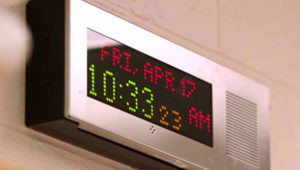Cost Estimating in Construction – Counting the Pennies
By Daniel A. Traina, EIT
 Pre-construction planning is the process of creating a ‘road map’ of a construction project before onsite work actually begins. A comprehensive pre-construction plan includes many aspects such as cost estimating, market research, scheduling, risk analysis, and site logistics. Time spent pre-planning before mobilizing pays dividends later. A project with a well thought out plan is more likely to be executed well, while a lack of planning can lead to chaos, creating a jobsite that is disorganized and even dangerous. Today I will focus on the cost estimating component of pre-construction and take a look at how important accurate budgeting is to a successful project.
Pre-construction planning is the process of creating a ‘road map’ of a construction project before onsite work actually begins. A comprehensive pre-construction plan includes many aspects such as cost estimating, market research, scheduling, risk analysis, and site logistics. Time spent pre-planning before mobilizing pays dividends later. A project with a well thought out plan is more likely to be executed well, while a lack of planning can lead to chaos, creating a jobsite that is disorganized and even dangerous. Today I will focus on the cost estimating component of pre-construction and take a look at how important accurate budgeting is to a successful project.
I will begin by recreating a painful situation that most in the construction industry have experienced. A project team (including owner, end user, architect, engineer, and in some cases contractor) have worked for months or even years to get a project to the construction document stage. The project is released for bid and on bid day the team is left disappointed with bids that have come in substantially over budget. Sometimes this causes a project to be canceled altogether. Other times the project needs to go through a lengthy cost reduction or rebid process, in either case likely impacting the planned schedule. Bid documents may need to be revised, meaning staff are redoing previously completed work, which is generally bad for morale.
A good cost estimating process involves verification of quantities and budget numbers from multiple sources. Any differences in quantities, pricing, or approach between the multiple sources should be reconciled between stakeholders. This process helps to identify any errors in the estimate and project risks, as well as engage all project stakeholders. Following this process helps to avoid the undesirable situation described above by identifying budget challenged projects early on. The active budgeting process should begin much earlier than the bidding phase. When possible a construction manager or general contractor should be engaged on a project at or even prior to design development (schematic design is even better if upfront schedule allows time). When budget constraints are identified early on, the impact to the project schedule and the need for document rework are far less. It is a much easier and faster process to reduce costs in early stages than during the construction document phase. Additionally, the process of cost estimating at early design phases (concept or schematic design) can verify the feasibility of a project. If a project is shown to not be feasible early on, the owner can save a good deal of effort, time, and money by pulling the plug on the project right away, as opposed to progressing a project to construction documents which will not end up being built.
At Welliver we provide market specific, real time estimates and price the work via multiple sources. This means we quantify the entire project and apply historical pricing for the market. At the same time, we utilize the subcontractor community to provide real time budgets for their scopes of work. Our internal pricing is then compared to and considered against subcontractor budgets to build confidence in the overall estimate. This process helps to identify potential cost exposures/risk in the cost estimate. Subcontractors are carefully selected from those who are best suited for the specific project (based on project location, size, type of work, etc.). In the case that cost estimates are above the owner’s budget, we work together to identify potential scope changes and value engineering to bring the project back on track.
Feel free to reach out to myself or any of your existing Welliver contacts for assistance with pre-construction cost estimating on your next project. Engagement early on has the biggest potential for positive impact on your project.
Dan brings more than 10 years of construction experience, an extensive cost database, and current bid market trends to every pre-construction estimate and competitive project bid. He has an impressive background in engineering and design, which he draws from when performing cost analyses, unit pricing, value engineering, and constructability reviews. Experienced working with numerous state-of-the-art technical software programs, Dan provides accurate and realistic project estimation, a proven value to his client’s decision making process. As Lead Estimator for Welliver, Dan leads the execution and delivery of estimating services for a substantial number of highly complex and significant projects for clients representing a broad range of market sectors including higher education, industrial, healthcare, and commercial/residential. Dan can be reached at [email protected].






 School districts in New York State are required to continually plan for the maintenance of their facilities through the utilization of the Building Condition Survey (BCS) every five years. In spite of this however, most districts have so many needs that the vast majority of needs far exceeds a district’s ability to address all of them. In addition to this, many districts have aging buildings which suffer from poor air quality, lighting, climate control, and ventilation all of which have a direct impact on student learning.
School districts in New York State are required to continually plan for the maintenance of their facilities through the utilization of the Building Condition Survey (BCS) every five years. In spite of this however, most districts have so many needs that the vast majority of needs far exceeds a district’s ability to address all of them. In addition to this, many districts have aging buildings which suffer from poor air quality, lighting, climate control, and ventilation all of which have a direct impact on student learning. As construction companies, we find ourselves not only being committed to our client’s success but also committed to the safety and welfare of our employees and the entire worksite.
As construction companies, we find ourselves not only being committed to our client’s success but also committed to the safety and welfare of our employees and the entire worksite. K-12 schools across New York State have been taking on a lot more outside threats than usual. Currently, containing COVID-19 is at the forefront. Aside from COVID, schools have been continuing to explore and implement ways to make their buildings and campuses safer. To effectively learn, students need to feel safe and comfortable.
K-12 schools across New York State have been taking on a lot more outside threats than usual. Currently, containing COVID-19 is at the forefront. Aside from COVID, schools have been continuing to explore and implement ways to make their buildings and campuses safer. To effectively learn, students need to feel safe and comfortable.
 Patients come first. With hospital expansions and renovations on the rise, many healthcare facilities are challenged with protecting their occupants. Working in construction for the healthcare industry, you quickly realize that the focus is always on the patients. They are the reason why we set up and monitor infection control protective barriers, why we cover our carts before hauling construction debris through the hospital, why we check and verify that the plug-in on the other end is not a life support system before shutting off the breakers, why we confirm the fire and smoke barriers are properly sealed, and why we ensure proper negative/positive pressure and air exchanges in the hospital rooms.
Patients come first. With hospital expansions and renovations on the rise, many healthcare facilities are challenged with protecting their occupants. Working in construction for the healthcare industry, you quickly realize that the focus is always on the patients. They are the reason why we set up and monitor infection control protective barriers, why we cover our carts before hauling construction debris through the hospital, why we check and verify that the plug-in on the other end is not a life support system before shutting off the breakers, why we confirm the fire and smoke barriers are properly sealed, and why we ensure proper negative/positive pressure and air exchanges in the hospital rooms. Your school district has the results of your Building Condition Survey and a capital improvements project has been deemed necessary. The district has prepared a five-year plan and identified facilities needing renovation or replacement. Now what?
Your school district has the results of your Building Condition Survey and a capital improvements project has been deemed necessary. The district has prepared a five-year plan and identified facilities needing renovation or replacement. Now what?